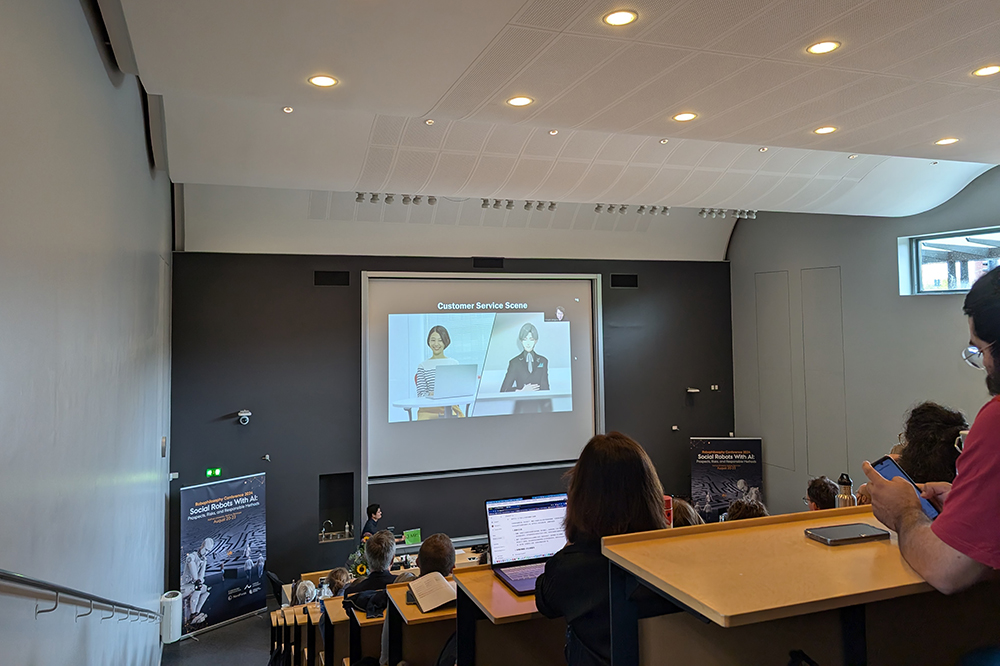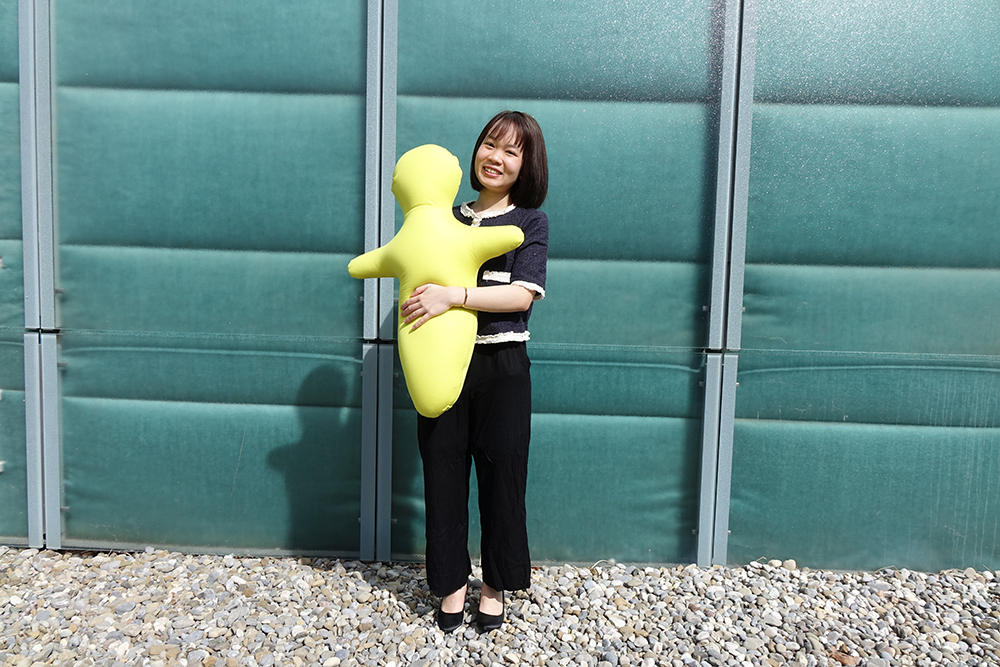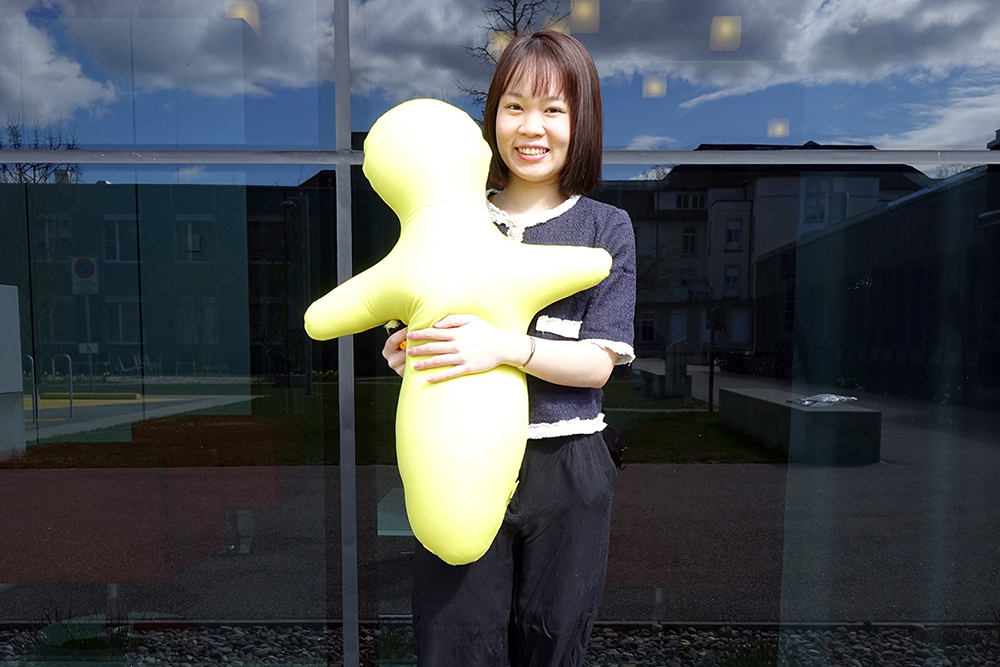On the fourth day of Robophilosophy 2024, Hiroshi Ishiguro, Professor at the Department of Systems Innovation in the Graduate School of Engineering Science at Osaka University, gave a talk entitled “AI Avatars and the Future Society”. From the abstract: “In this lecture, the presenter will report on the research and development of remotely operated robots and CG agents, also known as avatars. Avatar technology has advanced significantly in recent years, thanks to progress in AI technology. We will discuss the various services that can be deployed using avatars and the kind of society we can realize as a result.” (Website Robophilosophy 2024) After the lecture, the roboticist was questioned by Raja Chatila, Sorbonne University (France), and Mihaela Constantinescu, Faculty of Philosophy, University of Bucharest (Romania). Hiroshi Ishiguro had been a regular guest at Robophilosophy. In 2018, he appeared on site in Vienna.
Gendering Hugvie
On December 13th, 2022, the hybrid workshop “Realization of Avatar-Symbiotic Society” was held at the ICSR. It was organized by Dr. Takahiro Miyashita (ATR) and Prof. Dr. Takashi Yoshimi (Shibaura-IT). The description of the workshop was as follows: “This workshop aims at presenting the ongoing progress of the challenges on the Moonshot (MS) human-centered long-term R&D program. It will discuss by focusing on the goal 1 of the MS dealing with the future realization of an avatar-symbiotic society and cybernetic avatars (CAs). In the workshop, semi-autonomous tele-operated robots and CG agents are called CAs. The participants will discuss with speakers who are researchers related to CAs technology about the avatar-symbiotic society which enables to freely and actively participate in society for every person.” (Website ICSR) The first lecture entitled “Avatar and the future society” was given by Prof. Dr. Hiroshi Ishiguro (Osaka University). He introduced Erica, Telenoid, and Hugvie, among others. Hugvie is a technically expandable doll that can be hugged. He also introduced his “Avatar Infrastructure”: “Anyone, including the elderly and people with disabilities, will be able to freely participate in various activities with abilities beyond ordinary people while expanding their physical, cognitive, and perceptual abilities using a large number of CAs.” Prof. Dr. Oliver Bendel mentioned to Hiroshi Ishiguro that two of his former students, Nhi Tran Hoang Yen and Thang Hoang Vu from Ho Chi Minh City, interpreted his Hugvie as a female figure and designed a male figur (Gendering Hugvie) as part of a project on social robots. The roboticist from Osaka replied that his Hugvie doll had no gender, but noted the reception with interest. Other presentations with exciting discussions followed. More information on the conference via www.icsr2022.it.
The New Life of Hugvie
How can you make social robots out of simple, soft shapes and objects, i.e. robots for interacting with people and animals? Under the supervision of Prof. Dr. Oliver Bendel, Vietnamese students Nhi Hoang Yen Tran and Thang Vu Hoang are investigating this question in the project “Simple, Soft Social Robots” at the School of Business FHNW. They are using Hugvie from the Hiroshi Ishiguro Laboratories as a basis – these labs are particularly famous for the Geminoid and for Erica. But hugging robots like Telenoid also come from them. The latest product from this series is Hugvie. A pocket for a smartphone is attached to its head. People who are far away from each other can talk to each other and have the feeling of hugging and feeling each other. But what else can you do with Hugvie and similar forms? Can you make them conversationalists themselves, can you teach them to move their limbs and be active in other ways? And what does such robotization of simple, soft forms and objects mean for everyday life and society?


